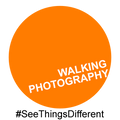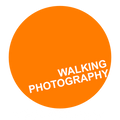Easy Ways to Waste Hours in Isolation With a Camera Part 1:

Photograph Droplets

So it looks like we're all going to be spending much more time in and around the house for the next few months. With this in mind I thought I'd start sharing ideas on easy ways to waste away those social distancing hours with a camera!
Part 1
The first challenge is to try photographing droplets...
The great thing about photographing droplets is that you can make it as easy or as challenging as you like. You can start really basic, like pouring a watering can into a bucket and take it as far as you want: milk into a cup of tea, paint into a vase of water; your imagination is your limit!
It's unlikely you're going to nail this first time, and that's what helps pass away the time. Minutes turn into hours as you adjust and experiment to try and capture the perfect shot. The more you work at it the greater the sense of satisfaction. Before you know it you'll have missed hours daytime telly in the blinking of an eye... or the click of a shutter!
The closer you get to the drops, the trickier it becomes, so here's some tips on taking your droplets photos to the next level...

Firstly, using a tripod and manual focus will help get better and more consistent results.
For the dropper there are a number of options. A paper cup with a tiny hole, a pipette, a straw or the hollow of a biro pen using a finger to trap the water, even a wet flannel or kitchen towel.
If you can find a way to maintain a consistent distance for the falling drops (like some kind of clamp device) that will greatly increase your success rate. As will having you camera 'drive mode' set to high (the quicker succession of shots you fire, the greater your chances).
There's two general approaches to droplet photography. One way is to use a flash to freeze the drop. In some ways this is easier in other ways it's harder. Using the flash is a really effective way to "freeze" action. The key to success is making sure the flash is completely lighting the scene (shut out as much natural light as possible, preferably in the dark) otherwise you'll get what's called 'drag', which can ruin the sharpness of the shot.
To capture droplets without a flash you'll want as much natural light as possible. Keep ISO set to auto and switch to manual mode with a shutter speed of around 1/2000th of sec and something like f8 to give you a little bit of leeway on the focus.
If you struggle to capture the droplets themselves, start looking at the ripples and experiment with those. If you succeed at the droplets make it more challenging by trying to capture a falling droplet mid-flight and experiment with different backgrounds.

Hope this helps some of you pass away some hours indoors. I'd love to see your results so please feel free to share them on https://www.facebook.com/WalkingPhotographer/
Stay tuned for more ways to pass the hours with a camera in the weeks ahead.





Leave a comment